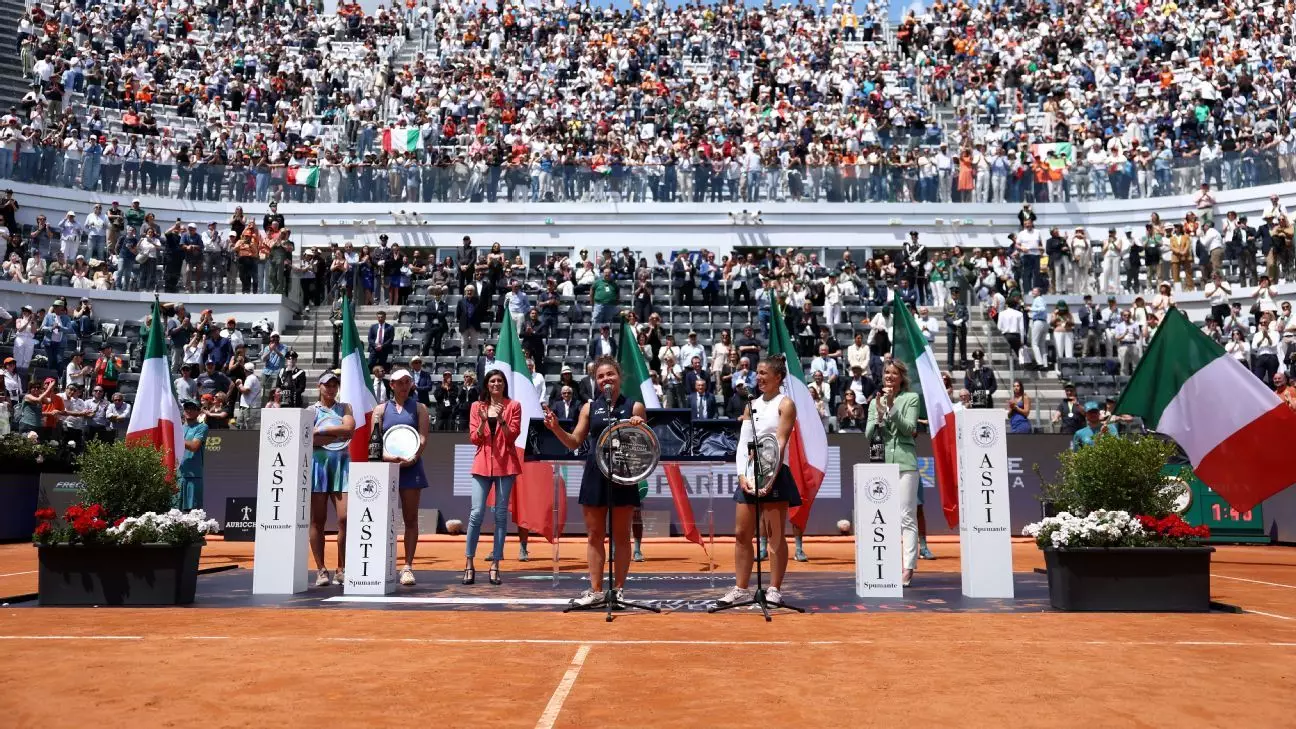In recent years, Italy has quietly cemented its reputation as a burgeoning force in the world of tennis. With stars like Jannik Sinner and Jasmine Paolini leading the charge, Italian tennis has not only seen a surge in individual talent but has also fostered an exhilarating team spirit. This ascending trajectory culminated in a remarkable feat: Italy swept both the Davis Cup and the Billie Jean King Cup in the previous year. As the atmosphere in the echelons of international tennis becomes increasingly charged with Italian colors, the ambitions of the Italian Tennis and Padel Federation under the stewardship of President Angelo Binaghi are stirring up conversations that could alter the landscape of the sport itself.
A Shift in Tennis Hierarchy
At the core of Binaghi’s grand vision is the aspiration to elevate the Italian Open to the status of a fifth Grand Slam tournament. A bold ambition, indeed, as it challenges the century-old monopoly held by the traditional four: the Australian Open, French Open, Wimbledon, and the US Open. Binaghi’s contention is that such an enduring monopoly is untenable in any other facet of society. He passionately argues that tennis’s growth is stymied by this rigid structure. The rhetoric is intoxicating—if this vision were actualized, it could herald a revolutionary era in tennis, opening up opportunities that have long been monopolized.
This predicament raises questions about the organization and culture surrounding the sport. Can tennis innovate and expand its appeal while maintaining the sanctity of its most revered tournaments? The Italian Open, classified as a Masters Series event, already operates on par with the majors in terms of duration and atmosphere. However, its perceived hierarchy often limits its capacity for growth. Binaghi’s transformation of the Italian Open into a fifth Grand Slam could not only enhance Italy’s standing in tennis but might also restore vibrancy to a sport in need of rejuvenation.
The Infrastructure Push
Integral to this ambition is the proposed infrastructural overhaul at the Foro Italico, Italy’s hallowed tennis grounds. The announcement of a retractable roof over Campo Centrale is a significant milestone, symbolizing a steadfast commitment to elevating the tournament’s status. Slated for completion by 2028, this roof will not only enhance the experience for players and spectators alike but will also expand seating capacity by an additional 2,000, enabling more fans to partake in the thrilling atmosphere of the event.
Additionally, the recent increase of the tournament grounds from 12 to 20 hectares indicates a forward-thinking approach to infrastructure—a prime factor in accommodating larger crowds and hosting more events. The introduction of a new competition arena coupled with expanded facilities embodies a meticulous strategy aimed at amplifying the tournament’s appeal. As the Italian Open positions itself for a future where it can rival the grandest tournaments, the infrastructural upgrades play an essential role in persuading players and fans that change is not only desired but imminent.
Strategic Acquisitions and Expansion
Binaghi’s vision does not stop at mere organizational enhancements; it extends to strategic acquisitions that promise to bolster Italy’s stature further. His interest in acquiring the license for the Madrid Open underlines a proactive stance in reshaping the tennis calendar to Italy’s advantage. By eliminating a competitor and leveraging the historical significance of the Italian Open, Binaghi seeks not just to elevate a single tournament but to reconfigure the tennis ecosystem altogether.
This relentless pursuit for excellence and recognition positions Italy as not merely a player but as a potential game-changer in global tennis narratives. As the Davis Cup Final 8 is set to kick off its three-year run in Italy, there’s a palpable sense of destiny in the air. It serves as a platform for Italy to showcase its dominance and organizational prowess, validating Binaghi’s claims that Italy is now “world champion both on the court and at the organizational level.”
A New Era on the Horizon
The convergence of rising talent, infrastructural evolution, and a bold reimagining of tennis hierarchies signifies that Italian tennis is at a tipping point. The discourse surrounding the Italian Open’s potential rise to Grand Slam status is emblematic of a broader aspiration within the tennis community to reinvent itself. If Binaghi can galvanize support and turn his vision into reality, it could represent not just a victory for Italy, but a refreshing evolution for the sport as a whole, embodying the idea that in tennis, the best is yet to come.


Leave a Reply